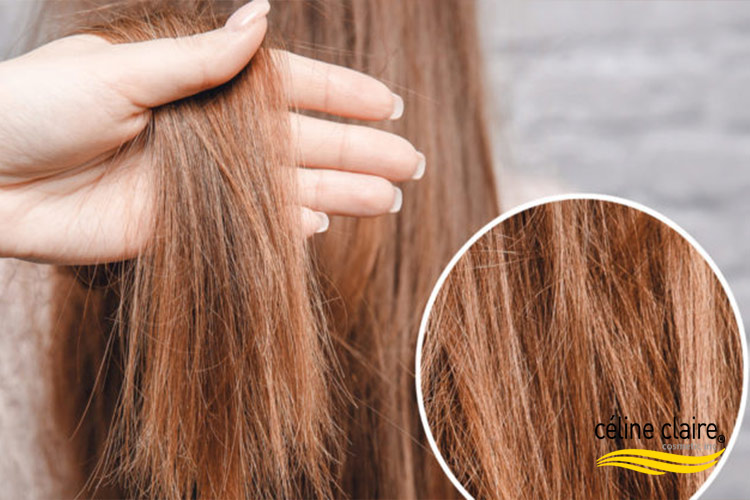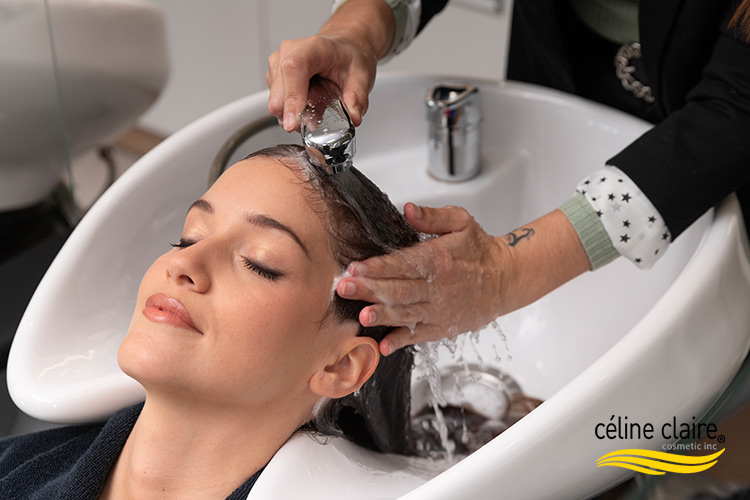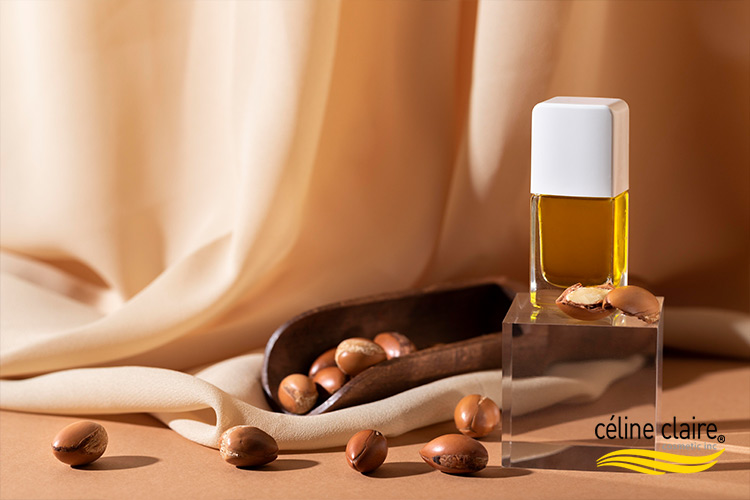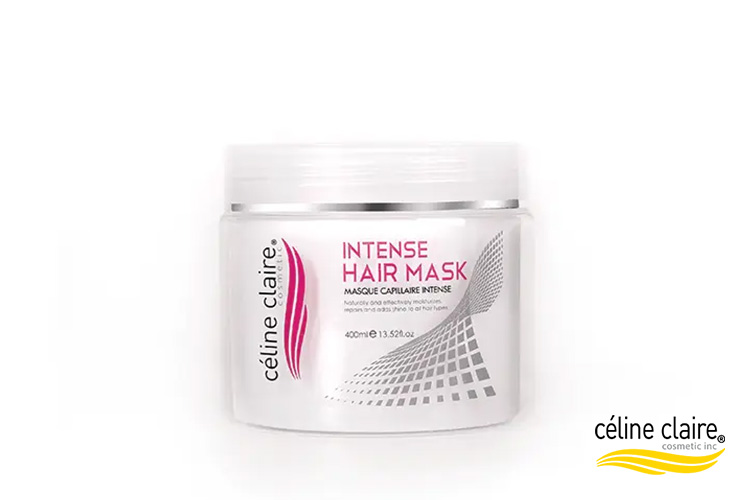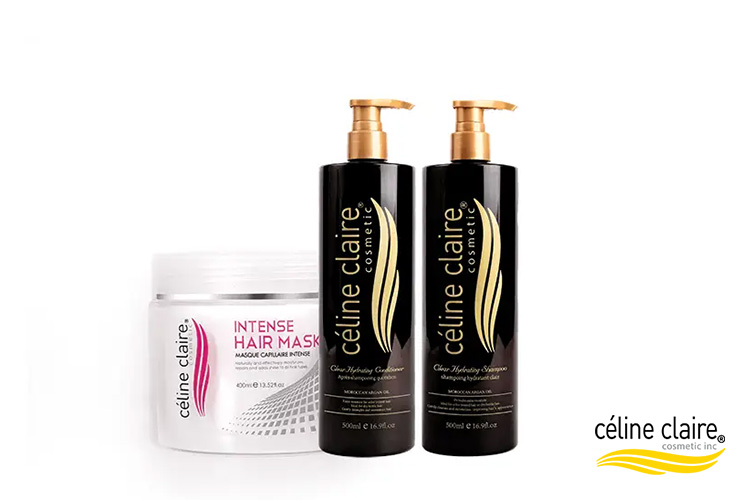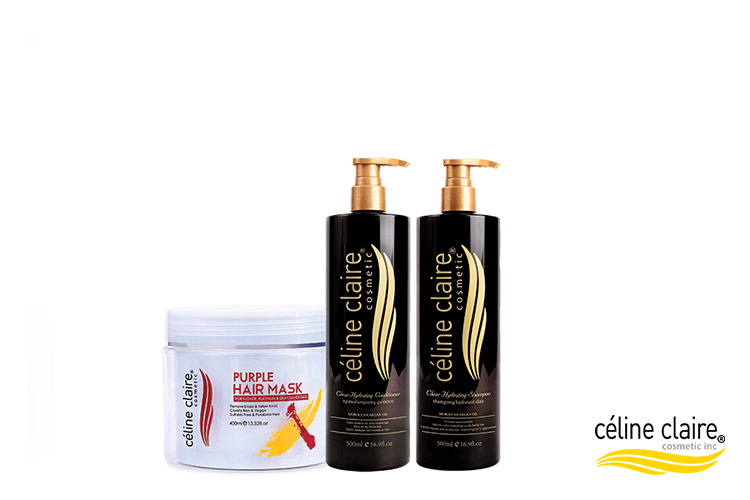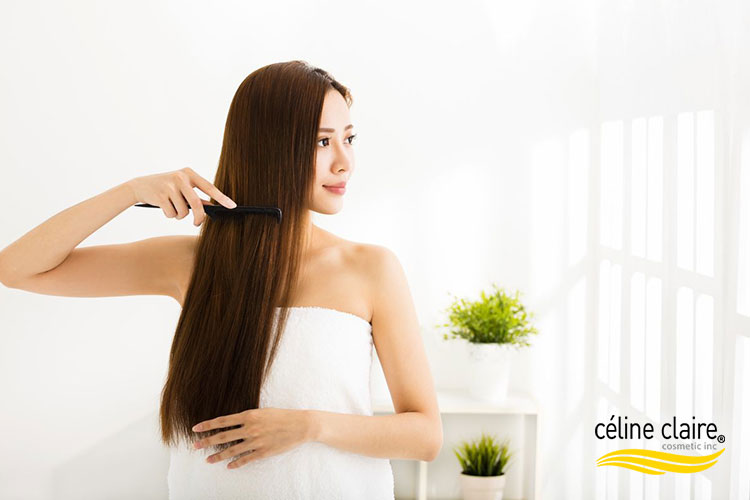
The best hair masks for dry and damaged hair
Celineclaire Running your fingers through silky, smooth, and healthy hair is tremendously rewarding. It’s like that perfect outfit that fits just right or the cozy warmth of your favorite blanket on a chilly evening simple pleasures that make you feel put together and confident.
But what happens when your hair begins to lose luster? When the silky strands you once adored turn into a dry, brittle mess that no amount of styling can restore?
If you are nodding right now, you are not alone. Many of us have been there: standing in front of the mirror, frustrated by the sight of dull, lifeless hair that snaps off at the least touch. Your hair appears to be sending you a message, asking for some much-needed care and attention.
The reality is that our hair goes through a lot. From the heat of blow dryers and straighteners to the harsh chemicals in dyes and treatments, as well as environmental stresses such as sun exposure and pollution, it’s no surprise that our hair may look and feel worn. This is where the magic of hair masks comes in.
Hair masks are similar to deep conditioners in the hair care world, but with additional advantages. They’re intended to penetrate deeply, nourish fiercely, and restore damage that ordinary conditioners just cannot reach.
A decent hair mask may be a game changer for those of us who suffer from dry, damaged hair, restoring the softness, gloss, and strength that our hair desperately craves. But, with so many alternatives on the market, how can you know which one is most effective for you? That is exactly what we are here to investigate.
Understanding Dry and Damaged Hair
Before we get into the finest hair masks for hair treatment, it’s necessary to understand why hair gets dry and damaged in the first place. This information will not only help you in selecting the appropriate products but will also protect your hair from additional damage, ensuring that it remains healthy and attractive.
Causes of Dry and Damaged Hair
Consider your hair as a delicate fabric. When exposed to severe conditions, your hair can become dry and damaged, just like a cherished sweater might pill and lose its smoothness after too many washes. Here are some of the most common causes:
Heat Styling
Including everyday usage of flat irons, curling wands, and blow dryers, is a primary cause of hair damage. The extreme heat may harm your hair’s natural oils, leaving it dry, brittle, and prone to breakage.
Imagine trying to iron a silk garment on high heat; that wouldn’t go well, would it? The same applies to your hair.
Chemical treatments
Coloring, perming, and relaxing are all chemical treatments that change the structure of your hair. While these treatments might give you the desired look, they can also damage your hair’s integrity. Over time, this can cause dryness, split ends, and even hair loss.
Environmental Factors
The environment has a big impact on the health of your hair. Prolonged exposure to the sun’s UV rays can break down the protein structure of your hair, while pollution and severe weather conditions may drain moisture.
It’s like leaving your hair exposed to the weather without protection—it’s 100% to suffer.
Over washing
Over washing may be harmful to your hair, despite the importance of cleanliness. Frequent washing drains your hair’s natural oils, which are necessary for keeping it moisturized and protected. It’s like washing your favorite jeans every day: the fabric will fade and wear out.
Poor Diet
Your hair’s health reflects your overall well-being. A diet lacking key elements such as vitamins, minerals, and proteins can result in weak, dull, and dry hair. Your hair, like your body, needs the proper nutrients to maintain its strength and shine.
Symptoms of Dry and Damaged Hair
Now that we’ve covered the reasons, let’s look at the symptoms. How can you know whether your hair needs serious hair repair? Here are some indications to look out for:
- Frizz and Flyaways: Dry hair is more porous, so it collects moisture from the air, resulting in frizz and flyaways.
- Split Ends: When your hair gets dry, the ends weaken and begin to break. This is not only ugly, but it can also lead to more damage if left ignored.
- Dullness: Healthy hair has a natural shine because its smooth edges reflect light. Damaged hair, on the other hand, has rough, raised cuticles that scatter light, leaving your hair looking dull and lifeless.
- Tangles and knots: Dry, damaged hair is prone to tangling due to a lack of moisture and lubrication. This might cause uncomfortable knots that are tough to comb out.
- Breakage: If you see more hair on your brush or pillow than normal, it might indicate that your hair is weak and breaking off. This is generally caused by damaged cuticles that can no longer protect your hair’s inner strands.
The Importance of Hair Repair and Treatment
Understanding the importance of hair restoration is critical for everyone with dry, damaged hair. These treatments are particularly developed to target the underlying concerns and restore your hair’s moisture, strength, and elasticity.
A solid skincare program may revive weary skin, and the appropriate hair treatment can bring new vitality to your locks.
Hair repair masks include powerful ingredients that target damaged regions, offering intense nourishment and protection. They act by reaching the hair shaft, filling up cuticle gaps, and sealing the outer layer to prevent further damage.
This not only helps to heal current damage, but it also protects your hair from future pressures.
What Makes a Great Hair Mask for Dry, Damaged Hair?
Now that we’ve looked at the causes and symptoms of dry, damaged hair, it’s time to go over treatments. A good hair mask may be an effective weapon against frizz, breakage, and dullness. But, with so many products on the market, how can you know which one is best for you? The solution is in the components.
Top Ingredients for Hair Masks
When choosing a hair mask for hair restoration, some substances stand out due to their capacity to nourish, hydrate, and strengthen. Here are some of the main components to look for:
Argan Oil
Known as “liquid gold,” argan oil is high in essential fatty acids, antioxidants, and vitamin E. It’s an absolute powerhouse for hair restoration, intensely hydrating the hair shaft and locking in moisture.
Argan oil also smoothes frizz, adds shine, and protects against environmental damage. Consider it a luxurious, nourishing blanket that surrounds each strand of your hair in tenderness and strength.
Keratin
Keratin is the protein that forms the structure of your hair. When your hair is damaged, it loses part of its natural keratin, resulting in weakening and breaking.
A keratin-infused hair mask can help restore lost protein, restoring the hair’s strength and resilience. It’s like giving your hair a much-needed injection of structural strength, so it is stronger from the inside out.
Shea Butter
Shea butter is well-known for its excellent moisturizing qualities. It contains high levels of vitamins A and E, as well as important fatty acids, which nourish dry, brittle hair.
Shea butter works by maintaining moisture, smoothing the cuticle, and forming a protective barrier against heat and environmental stress. Consider it a lovely, creamy balm that restores your hair’s smoothness and shine.
Coconut Oil
Coconut oil is a common ingredient in many hair care routines for good reason. It penetrates the hair shaft extremely well, giving deep hydration and aiding hair restoration.
Coconut oil contains natural antifungal features that might help keep your scalp healthy. When used as a hair mask, it helps turn dry, lifeless hair into soft, manageable strands.
Honey
Honey is a natural moisturizer, which means it absorbs moisture from the air and stores it in your hair. It also contains antioxidants and minerals that nourish and strengthen your hair.
Honey in a hair mask may help restore moisture, enhance elasticity, and give your hair a gorgeous shine.
Aloe Vera
Aloe vera is recognized for its calming and healing characteristics, making it an ideal element in hair treatments. It contains vitamins A, C, and E, which promote healthy cell turnover and lustrous hair.
Aloe vera contains proteolytic enzymes that repair dead skin cells on the scalp, creating a healthy environment for hair development.
Choosing the Right Hair Mask for Your Hair Type
Hair, like skin, is unique to each person. That’s why it’s critical to select a hair mask that is suited to your requirements. Here’s how to find the perfect one for your hair type:
- For fine hair
If you have fine hair, use a lightweight hair mask that won’t weigh it down. Look for formulations that include keratin and coconut oil, which strengthen and moisturize without adding excess weight. - For thick and coarse hair
Thick, coarse hair might benefit from a thicker, hydrating hair mask. Shea butter and argan oil are great for deep hydration and frizz control, making your hair silky and manageable. - For curly hair
Curly hair is drier and prone to frizz, so it requires a hair mask that provides intensive hydration and curl definition. Look for masks with moisturizing elements like honey and aloe vera to keep your curls bouncy and defined. - For color-treated hair
If you have color-treated hair, you should use a hair mask that preserves the color while also mending the damage. Argan oil and keratin are great for keeping color vibrant and mending chemically damaged hair.
Introducing 4 strengthening masks
With the correct components in mind, let’s look at some of the best hair masks on the market. These solutions were carefully chosen for their capacity to provide effective hair treatment, transforming even the most damaged hair into healthy, bright locks.
Purple Mask for Blonde Hair
Blonde hair, whether natural or dyed, requires special care to maintain its vibrancy and prevent brassiness. The Purple Mask is specifically designed to neutralize yellow tones, leaving blonde hair looking bright and fresh.
- Benefits
This mask not only corrects color but also hydrates and repairs damage. It’s enriched with keratin and argan oil, which work together to strengthen the hair and restore its natural shine.
- How to Use
Apply the mask to clean, damp hair, focusing on the areas where brassiness is most noticeable. Leave it on for 5-10 minutes, then rinse thoroughly. For best results, use once a week.
Purchase link: Purple Mask for Blonde Hair
Argan Oil Hair Mask
The Argan Oil Hair Mask is a luxurious +hair repair treatment that deeply nourishes and revitalizes dry, damaged hair.
- Benefits
This mask is packed with argan oil, which hydrates, smooths, and adds shine to your hair. It also contains shea butter and keratin, which repair and strengthen your hair from root to tip.
- How to Use
After shampooing, apply a generous amount of the mask to your hair, focusing on the ends. Leave it on for 10-15 minutes, then rinse thoroughly. Use once or twice a week for best results.
Purchase link: Argan Oil Hair Mask
Argan Oil Hydrating Shampoo & Conditioner Mask Bundle
For those who prefer a complete +hair treatment routine, the Argan Oil Hydrating Shampoo & Conditioner + Mask Bundle offers everything you need to repair and maintain healthy hair.
- Benefits
The shampoo and conditioner work together to cleanse and hydrate your hair, while the mask provides deep conditioning and +hair repair. This bundle is perfect for those with dry, damaged hair who want to streamline their routine.
- How to Use
Use the shampoo and conditioner as part of your regular hair washing routine. Once a week, replace your conditioner with the Argan Oil Hair Mask for an extra boost of hydration and repair.
Purchase link: Argan Oil Hydrating Shampoo & Conditioner Mask Bundle
Argan Oil Hydrating Shampoo & Conditioner + Purple Mask Bundle
This bundle is ideal for those with blonde or color-treated hair who want to keep their color vibrant while also addressing dryness and damage.
- Benefits
The combination of the Purple Mask with the Argan Oil Hydrating Shampoo and Conditioner offers both color protection and +hair repair. This bundle ensures your blonde hair stays bright, while also keeping it healthy and hydrated.
- How to Use
Use the shampoo and conditioner regularly, and incorporate the Purple Mask into your routine once a week to maintain your color and repair damage.
Purchase link: Argan Oil Hydrating Shampoo & Conditioner + Purple Mask Bundle
Conclusion
Dry, damaged hair does not need to be a lifelong issue. You may restore the health, gloss, and manageability of your hair by using the appropriate hair treatment and repair products. Whether you’re battling with the effects of too much heat styling, color treatments, or environmental damage, there’s a hair mask out there to help you.
Remember that consistency is the key to having healthy hair. Incorporate these hair masks into your daily routine, and don’t be hesitant to try out different products until you find the ones that work best for you. Your hair is unique, and it requires a personalized approach to care.
FAQ
Can I use a hair mask every day?
It’s generally not recommended to use a hair mask every day, as most are designed to provide intense treatment and could lead to product buildup. Aim to use a hair mask once or twice a week, depending on your hair’s needs.
How long should I leave a hair mask on?
The recommended time varies depending on the product. Most hair masks should be left on for 10-15 minutes, but always check the instructions on the packaging.
Can I use a hair mask on oily hair?
Yes, you can use a hair mask on oily hair, but choose a lightweight formula to avoid weighing your hair down. Focus on applying the mask to the ends, avoiding the roots.
What’s the difference between a hair mask and conditioner?
A hair mask is a more intensive treatment designed to repair and nourish the hair, while conditioner is used after shampooing to detangle and smooth the hair. Masks are typically used less frequently.
Are natural hair masks better than commercial ones?
Both have their benefits. Natural hair masks can be effective for those who prefer simple, ingredient-focused treatments, while commercial masks often contain a blend of scientifically formulated ingredients that target specific hair concerns.
Can I sleep with a hair mask on?
Some hair masks are safe to leave on overnight, but this depends on the product. Always check the instructions to ensure it’s suitable for extended use.
Can I make my own hair mask at home?
Yes, you can create DIY hair masks using ingredients like avocado, coconut oil, honey, and yogurt. These natural ingredients can provide moisture and nourishment, but they may not be as potent or long-lasting as commercial products designed for specific hair concerns.
Will using a hair mask weigh down fine hair?
Some hair masks can be heavy for fine hair, leading to a weighed-down appearance. If you have fine hair, look for lightweight, volumizing masks or those specifically formulated for fine or thin hair. Apply the mask primarily to the ends and avoid the roots.
How do I know if my hair needs a hair mask?
Signs that your hair could benefit from a hair mask include dryness, frizz, dullness, split ends, or a general lack of manageability. If your hair feels rough to the touch, looks lackluster, or breaks easily, it’s time for a deep conditioning treatment.
Can I use a hair mask on a sensitive scalp?
Yes, but choose a hair mask that is free from harsh chemicals, sulfates, and fragrances that could irritate your scalp. Look for masks with soothing ingredients like aloe vera, chamomile, or oatmeal to calm and nourish a sensitive scalp while treating your hair.

